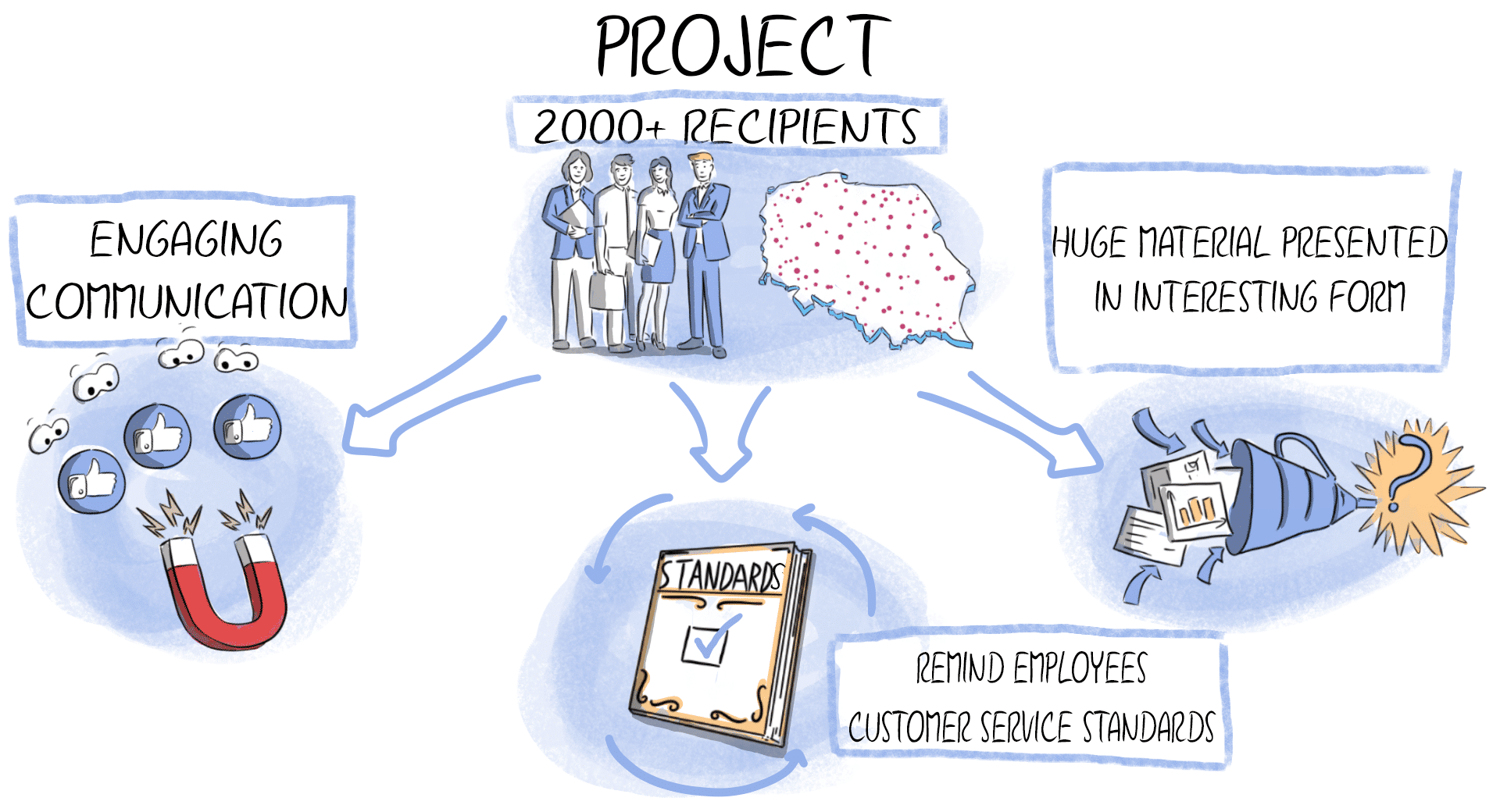Concerned that your employees won’t fully understand the new project or strategy?
That they will:
Make it shallow?
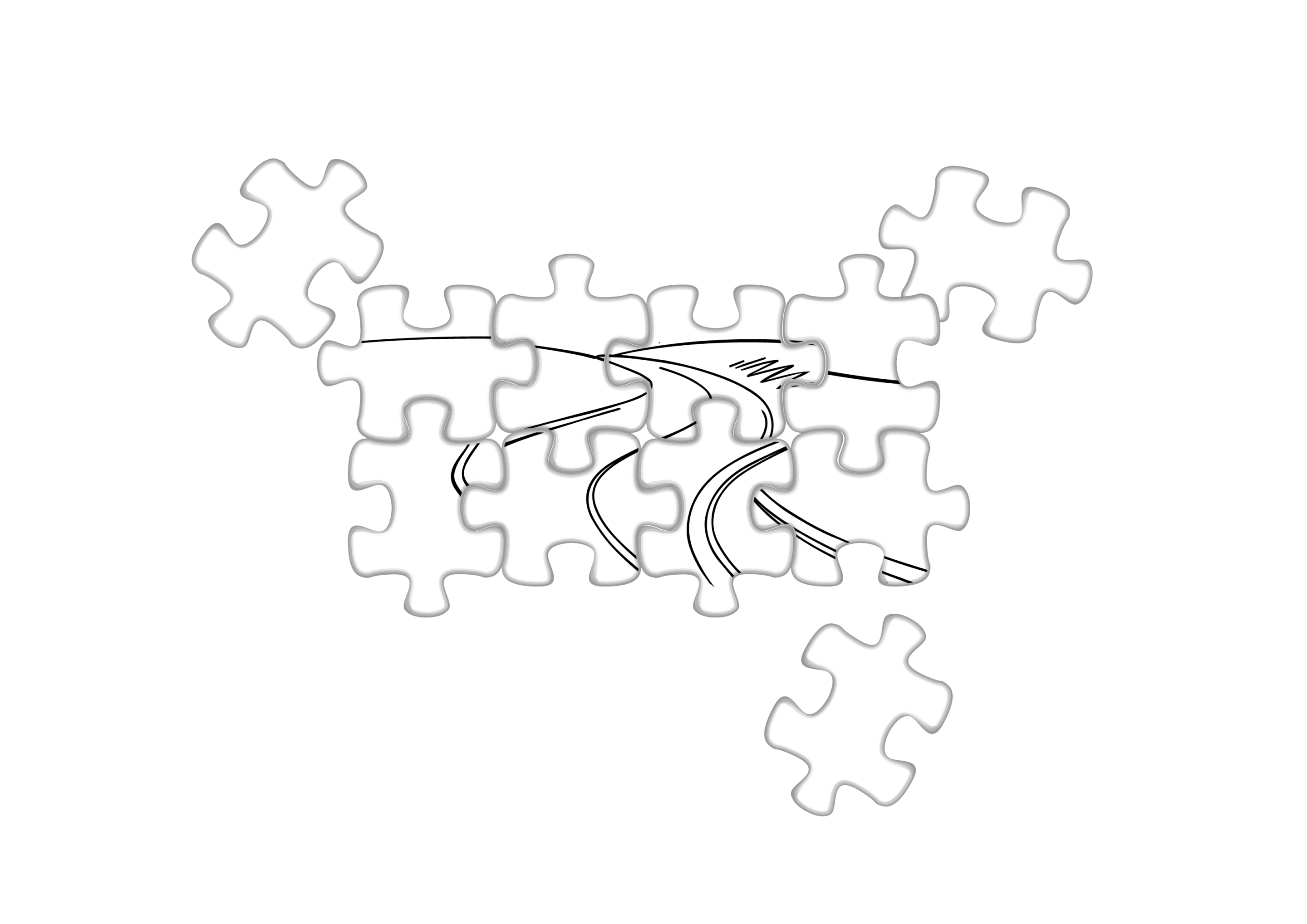
Twist it?

Get a negative attitude towards it?

No wonder.
Many employees play Chinese whispers. And with each round, their understanding and engagement drop.

This is probably why:
59% of problems with implementing strategic initiatives
is due to insufficient communication
“Project Management Institute’s Pulse of the Profession In-Depth Report: Enabling Organizational Change Through Strategic Initiatives” PMI, 2014
And the situation doesn’t get easier because of the fact that: 45% of internal communications professionals say employees receive too many messages and it’s hard to reach them.
“The definitive survey of the Employee Engagement and Internal Communication landscape” GateHouse, 2018
Just as it’s hard to assemble an IKEA closet without instructions, it’s hard to put a strategy together in your head without visuals.
That’s why we create materials to help you visualize, understand and implement your strategies and projects.
We offer:

A better understanding of the project by Employees
Because we tell about it in simple language enriched with visualizations.

Greater involvement
By emphasizing the “WHY” behind the project and neutralization of objections.
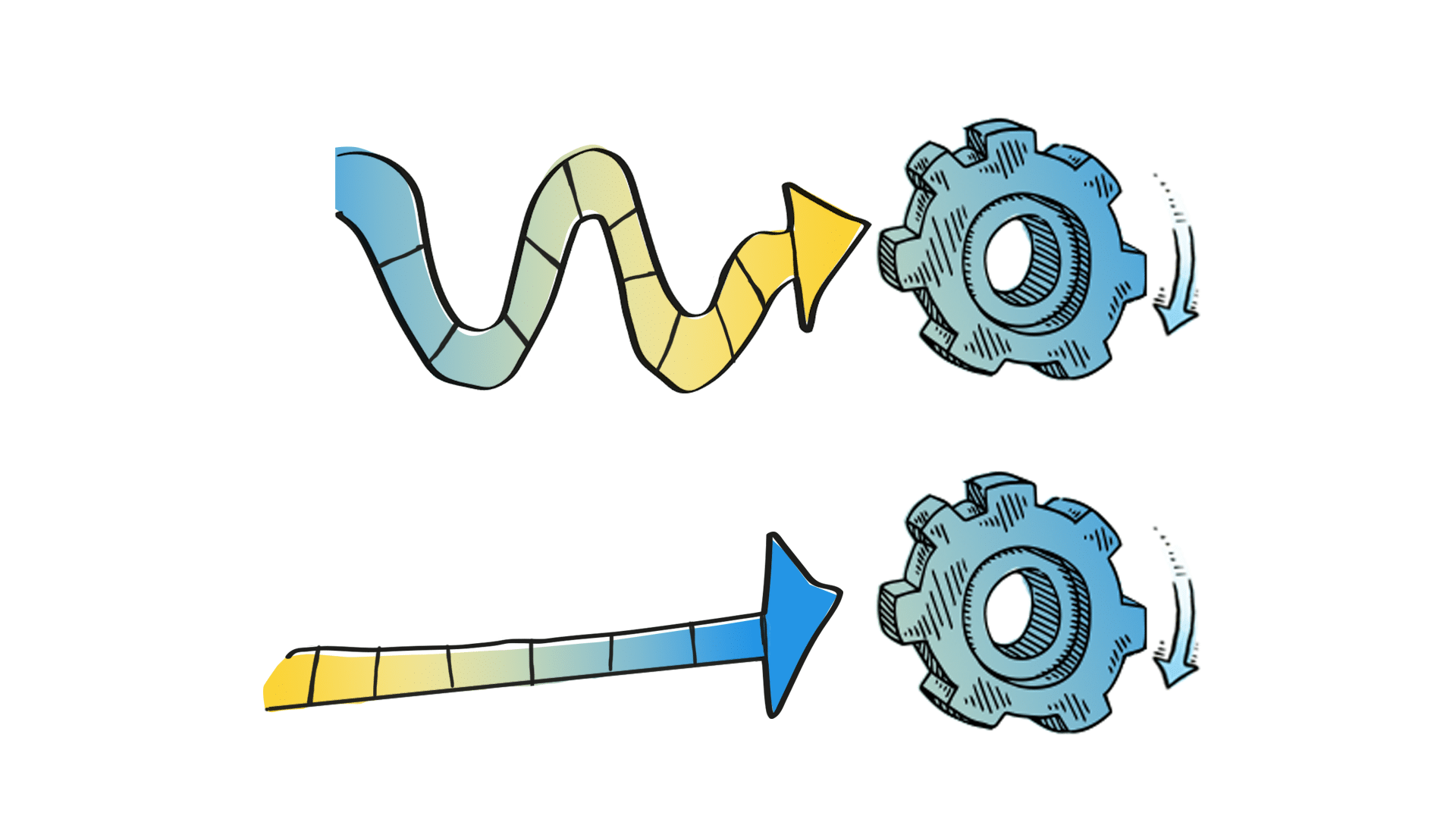
Faster implementation
With fewer questions, doubts, and tensions.
Discover our services designed to help engage employees
in the company’s strategic initiatives.
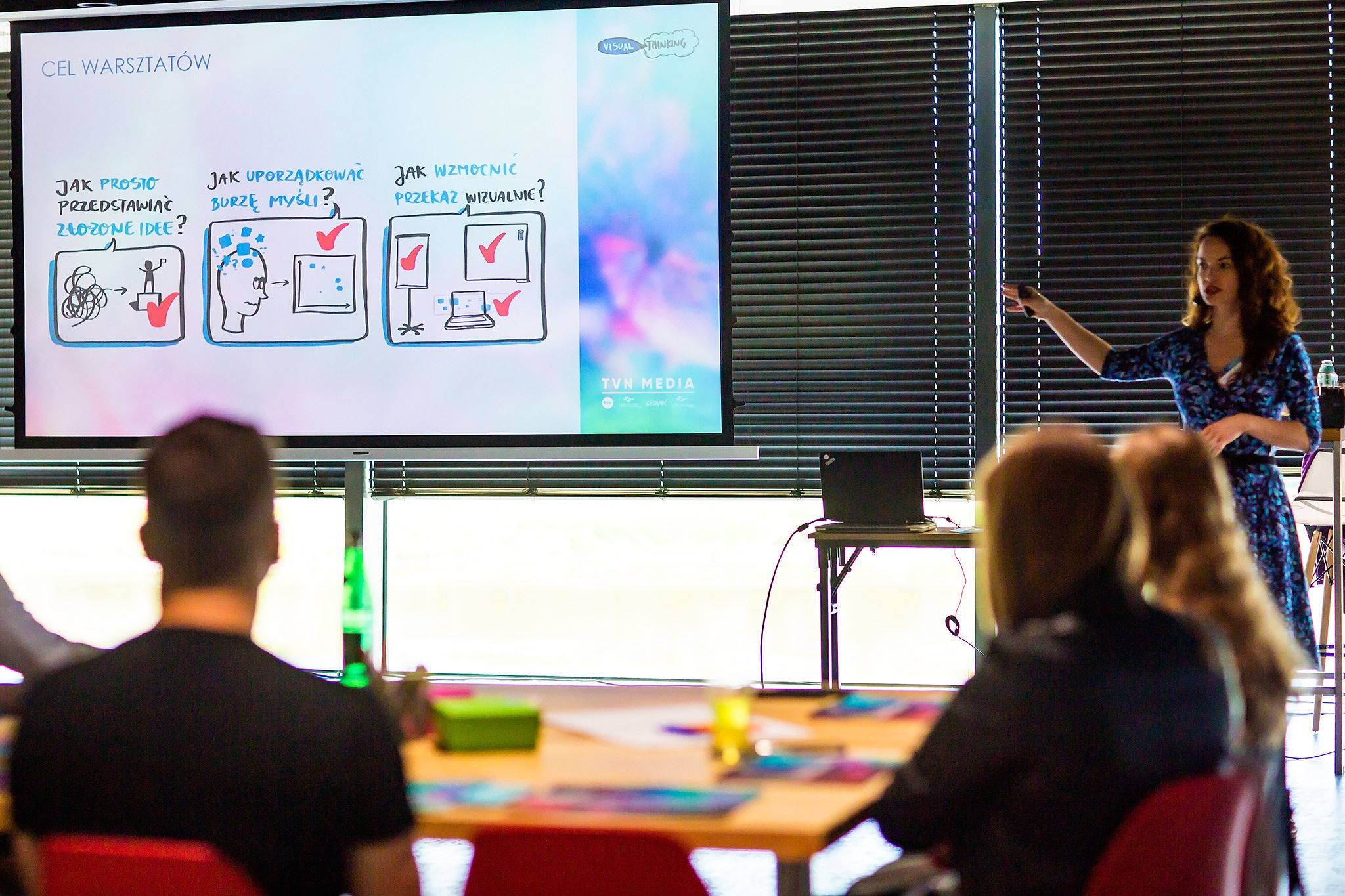
Workshop strategic support
Sometimes, the direction of the company’s development depends on one meeting. Then, you want to be absolutely sure that all perspectives have been taken into account and the decisions being made are correct.
That’s why the Graphic Recorder appears at the meeting.
He stands at a special board and translates the words into visual metaphors in real-time. Participants see a clear, illustrated summary of their discussions, allowing them to get the full picture.
And no important thread escapes. We also do it online.
Animations presenting key initiatives
We create animations for management boards that describe their most important decisions.
As a result, employees better understand the broader business context of the company, and it is easier for them to accept the upcoming change. And when the narrator of the animation is a Management Board member, employees feel that it is not just another piece of dry corporate material.
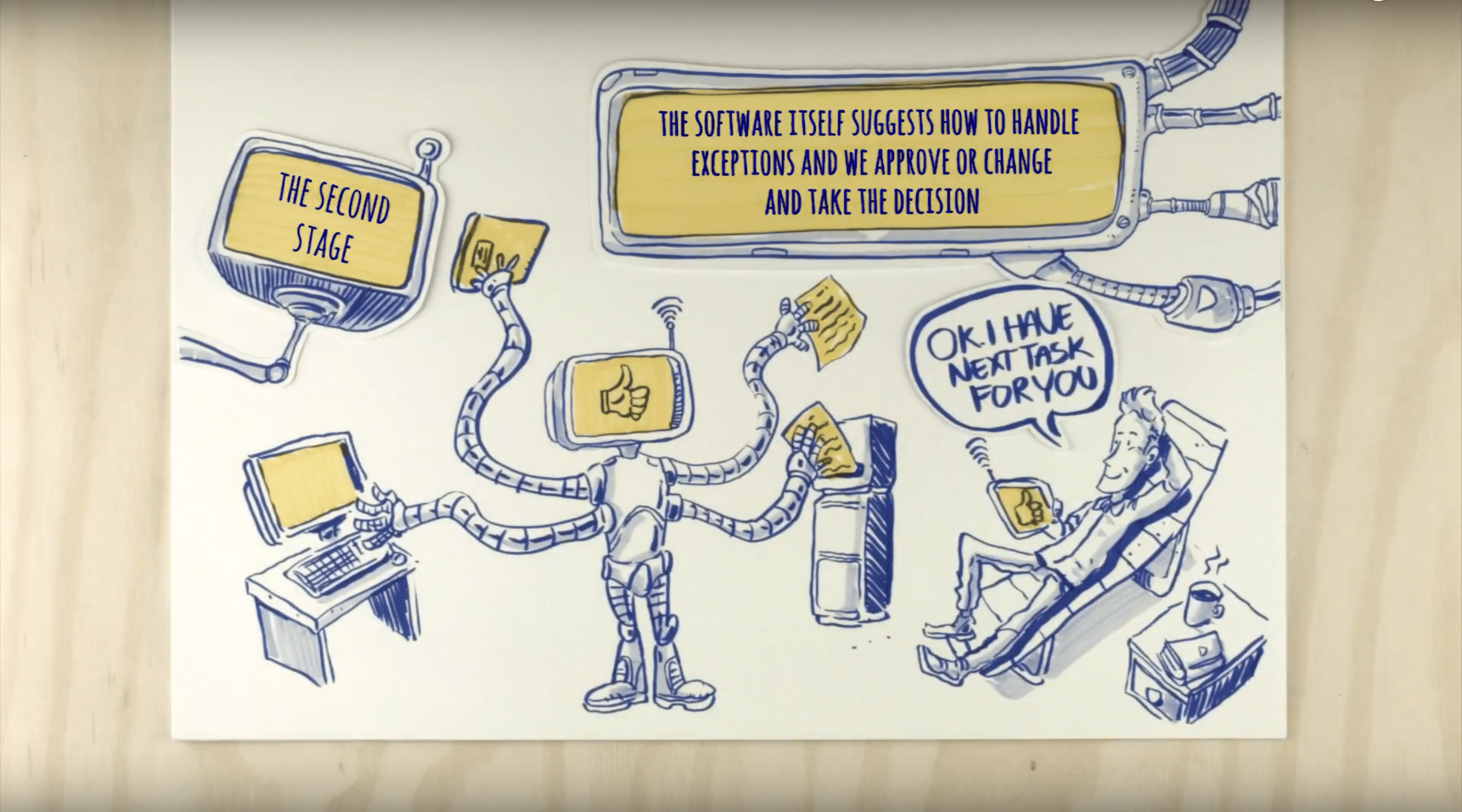
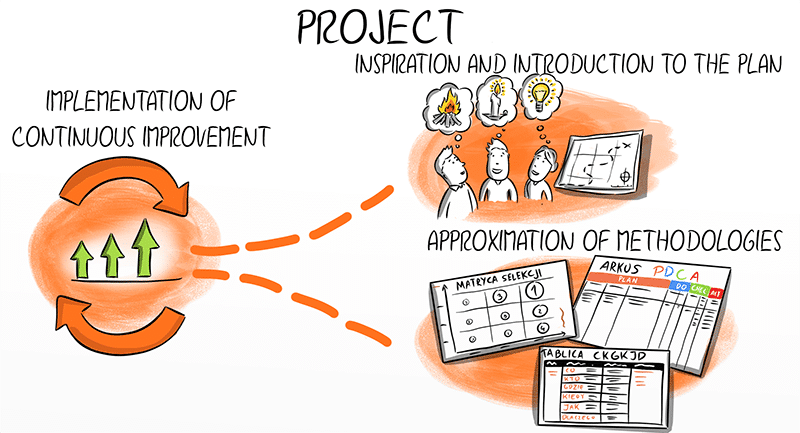
Presentations about the strategy
The best strategy can be beautifully prepared, but it still needs to be communicated properly. When the strategy is not understood and accepted by employees, there will be resistance to implementation. Hence – delays that generate costs.
That is why we create presentations for Management Boards that clearly and convincingly talk about their vision. Thanks to tailor-made visualizations, they can smoothly lead their story to inspire their employees.
We will build your message on the strongest fundamentals.
We use a system tested during many years of cooperation with startups, SMEs, corporations, and governments.

Analysis
We get to know your project and its needs better.
We transform them into tangible goals.

Consulting workshop
We get ideas and product knowledge from your team. On top of that, we add our expertise.

Refining the message
We organize the material from the workshop. And, then, we refine it using our knowledge from sales, marketing, storytelling, psychology, and visual thinking.

Production
We use the message to create effective OnePaAgers, animations, and sales presentations.
100% of our clients would recommend our services to other companies.
Learn our client’s stories
What makes us stand out?
We deeply understand the environment of large companies.
We have worked with over 30 corporations from industries such as finance, IT, pharmacy, and FMCG. We understand how to prepare the material to make it work.
You do not need to have experience in such projects.
We guide our clients through our proven collaboration process and take on the creative part.
You only get involved as much as you need to.
We work in iterative mode, which means that we propose various solutions ourselves, and all you have to do is give us feedback.
Contact us
We will advise you and answer all your questions.
Clients about us:
And if you want to know more before you decide,
see our text and visual materials…


